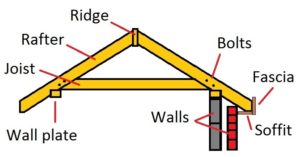Concrete -Screed Flooring - New/Existing
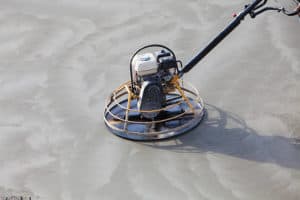
Concrete Flooring New
When new concrete flooring is laid, it is occasionally finished off by polishing to produce the smooth seamless floor.
In instances where a coating is required, then the moisture content of the concrete substrate should be no higher than 5% and specific moisture meter instruments are available for checking purposes.
Because a polished floor can leave residual cementitious material on the surface, this should be removed by washing with hydrochloric acid.
Following the preparatory work, then numerous types of floor coatings can be applied ranging from low film build water-based materials to high build two pack polyurethane or epoxy coatings.
Concrete Flooring Existing
Existing floorings could have been exposed to different types of usage and the condition may warrant additional preparation before being refurbished. In preparing existing, textured flooring not matter how fine it may be that mechanical equipment should be considered, such as scrabbling machine or a light sandblast.
https://newguardcoatings.com/independent-inspection/
1-2-3-4 reasons for painting
The reason for painting is based on 4 principals: Preservation, Decoration, Sanitation and Identification.
Preservation.
The Forth Bridge being constructed in 1898. The latest painting project completed in 2013 and guaranteed for 25 years.
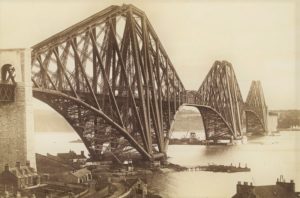
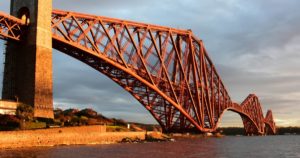
Decoration.
Ranging from normal interior and exterior painting to skills including wallpaper hanging, heraldry and gilding. See under 'And much more' Advance decorating skills.


Sanitation.
Protection against mould and algae problems
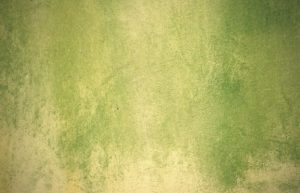
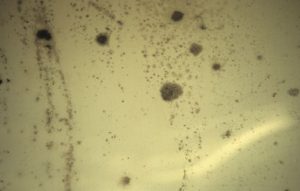
Identification.
Specific colours are used for health and safety purposes.
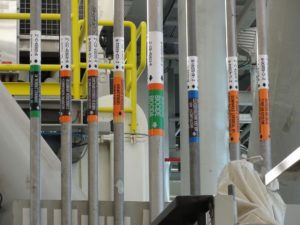
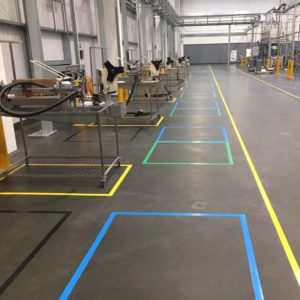
Wide Width Wallcoverings
Wide Width Wall Coverings
Toolbox
For further information on wide width wallcoverings see: https://www.muraspec.com/technical.php
Wide Width Wall Coverings
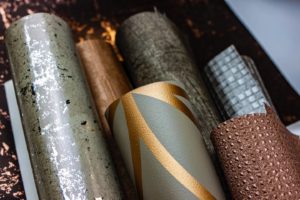
Wide Width Wall Coverings
These wall coverings are wider than normal wallpaper width of 53cm and be as wide as 138 cm depending on manufacture.
Coverings such as Cloth backed ,Silk, Flock, Grasscloth and Fiberglass are available.
Surface preparation prior to hanging is on the same lines as for standard wallpapers and should be free of all surface irregularities and contaminates.
The method of hanging wide width coverings generally requires the adhesive to be applied to the wall surface and not the reverse side of the coverings.
In all case the manufacturer's details on size and application should be obtained and followed for estimating purposes.
See: Tools Box in Tools and Equipment.
For more information:
Muraspec wallcoverings. https://www.muraspec.com/
https://www.grahambrown.com/uk/wallpaper/grasscloth
For application technique : https://www.youtube.com/watch?v=QHKzgskqtFs https://www.youtube.com/watch?v=9l7nNJLJlJY
Asbestos in Buildings
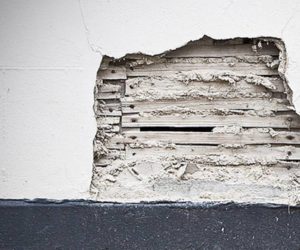
Asbestos in Buildings
Buildings constructed between 1950 and 1980's may have had some form of asbestos incorporated within the construction.
Usage in Buildings.
The areas of Asbestos use may be found include: Roof and Wall cladding - Flue pipes -Boiler cupboards - Insulating boards and Sound proofing panels-Heating pipe -Thermoplastic and vinyl floor tiles (often referred to as Marley Tiles) - Guttering and downpipes - soffits - Internal textured decorative coatings.
Should Asbestos wall or ceiling sheeting in good condition be identified then it is permissible to coat these surfaces with a water based product.
The removal of any dust dirt or surface contaminants should only be removed by approved contractors.
Health and Safety recommendations should be strictly followed by wearing full PPE including:
Full body overalls including head protection precautions, gloves, face covering, eye goggles and shoe coverings.
If loose particles are found under no circumstances should attempts be made to sweep or hoover up any loose material.
Generally three types were used and referred to as White, Blue and Brown.
As it is not always easy to identify an asbestos surface so if in doubt it is always best to leave and call in the experts.
Paint Suppliers: http://www.thermoguarduk.com/portfolio-items/asbestos-encapsulating-coat/
Training Providers: IATP> Independent Asbestos Training Providers https://www.iatp.org.uk/
Asbestos Removal Contractors Association: https://www.arca.org.uk/
Asbestos Testing and Consultancy Association: https://www.atac.org.uk/asbestos-testing-and-consultancy-association
Flooring Problems
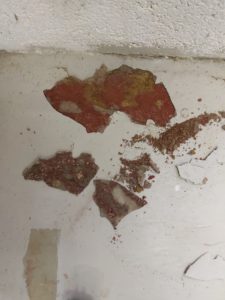
Floor Paint Problems
Failure of paint coatings onto concrete flooring can be caused by a number of reasons but predominately is due to moisture within the subflooring, applying paints over a poorly prepared surface. Another common cause is when parking vehicles onto the coated surface before the tyres had cooled down. This causing fusion between the hot rubber and the paint coating which causes de-detached from the concrete surface when the vehicle is moved.
Also see 'Don't let flooring problems trip you up' in News.
BS 476 Guidance on Performance of Paint Finishes in Standard Tests
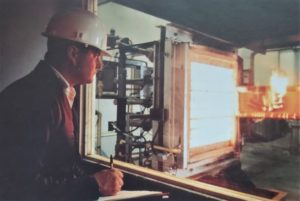 Guidance on Performance of Paint finishes in Standard Tests
Guidance on Performance of Paint finishes in Standard Tests
- Paint systems cannot be tested in isolation; they must be tested as they will be used in practice applied to a representative substrate.
- Test results can vary dependent upon the nature of the substrate to which they are applied. If paint is applied to a timber substrate, for example, it is likely to give a worse performance than if it is applied to a plasterboard substrate.
- It is not possible to generalise substrates as ‘combustible’ or ‘non-combustible’. A test result on a steel substrate, for example, may be worse than on a plasterboard substrate because Delamination of the coating from the steel occurs. Conversely a better result may be obtained on the steel substrate because it has different thermal characteristics than the plasterboard. Generalisations are dangerous.
Small differences in substrates can significantly affect the test results; the thermal conductivity, specific heat and density of the substrate all influence the test performance. A thinner steel substrate, for example, could give worse results than a slightly thicker steel substrate. With combustible substrates thicker substrates tend to give an improved performance during the early stages of the test due to increased thermal capacity) but poorer performances during
- the later stages due to additional fuel availability.
- The preparation of the substrate (e.g. cleaning, primer, undercoat systems) can affect the test results. The degree of adhesion of the coating system under the test conditions can be very important.
- The thickness of the coatings can be significant. In general the thicker the coatings the worse the result, but again generalisations can be dangerous.
- Apparently minor variations such as colour, method of application, time between application of coats and temperature/humidity conditions during the application process can all affect the test results.The development of a meaningful test programme to give the widest possible information on the paint system is therefore vital. Control of the application process is also important to ensure that the coating systems applied in practice are as similar as possible to the situation which was tested.
- Previously Painted SurfacesIt is not possible to confidently predict the spread of flame and heat release properties of coatings applied to previously painted surfaces. The existing paint finishes may be old and the effectiveness of their adhesion to the substrate or between coatings may be poor. In general, existing gloss paint systems tend to be the greatest problem and this is influenced by miniscule deposits of dirt which are difficult to remove, even by thorough washing. These cause trapped air layers which can lead to insulation/delamination problems. The combination of gloss and emulsion systems can also lead to poor performance, underlying emulsion coatings acting as an insulating layer. On the other hand it is possible that the properties of the old paints may have improved with ageing. Some paint manufacturers have conducted series of tests to investigate the properties of multi-coat systems, usually with modern paint formulations and these are usually accepted by specifiers as satisfactory evidence. The only way, however, is to remove all previous coatings and apply new systems to the stripped substrate.
Health and Safety Executive (HSE) Guidance
| PPE (Personal Protective Equipment) | 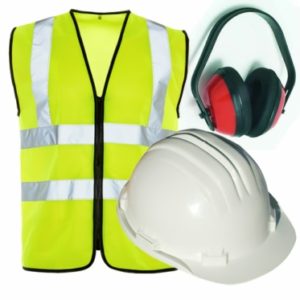 |
|---|---|
| https://www.hse.gov.uk/toolbox/ppe.htm | |
| Fire Safety |  |
| https://www.hse.gov.uk/construction/safetytopics/processfire.htm | |
| Riddor (Report injuries, diseases and dangerous occurrences) | |
| https://www.hse.gov.uk/riddor/index.htm | |
| Manual Handling | |
| https://www.hse.gov.uk/simple-health-safety/training/index.htm | |
| Asbestos | 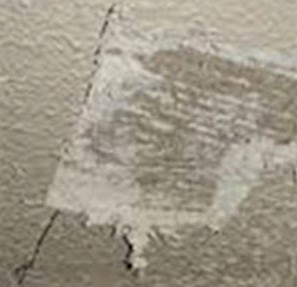 |
| https://www.hse.gov.uk/asbestos/index.htm | |
| Working at Height | 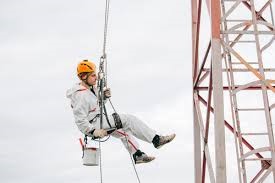 |
| https://www.hse.gov.uk/construction/safetytopics/assess.htm |
Carbonation of Concrete
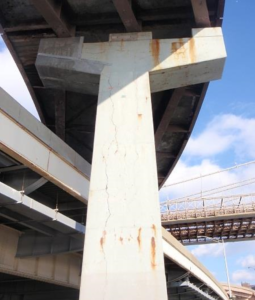 Carbonation of concrete.
Carbonation of concrete.
Carbonation of concrete is caused when moisture penetrates through porous areas of the structure allowing carbon dioxide to react with calcium hydroxide in the cement. (calcium carbonate).
When mixed with water the calcium carbonate forms a paste and can lead to corrosion (rust) of the steel reinforcing bars (Rebars).
As the corrosion builds up the the swelling can cause the concrete to fracture and ultimately breakaway.
For minor works the following solution may be considered but for any major works a structural engineer should be consulted.
Solution.
Where carbonation has occurred, all defective concrete should be removed and the exposed steel bars should be cleaned to remove all corrosion; followed by priming the steelwork with an anticorrosive primer.
All defective areas of concrete should then be made good as required and allowed to dry.
Painting.
An anti-carbonation coating should be applied in accordance with the manufacturer's instructions.
Suppliers of anti-carbonation coatings include.
Andura Coatings. https://www.andura.com/contact
New Guard Coatings Limited. https://newguardcoatings.com
Dulux. https://www.duluxtradepaintexpert.co.uk
Johnstones Paints.https://www.johnstonespaint.com/
